-
Save On Rescue Toboggans During Our Annual Summer Sale!
Time For Our Annual Rescue Toboggan Summer Sale!From July 1st until August 31st, 2025 we are offering $100 off Legend, Cruiser and Extreme (excluding Carbon Fiber) rescue toboggans shipped within the continental United States.
Terms and conditions to keep in mind:Sale begins July 1st, 2025, and ends August 31st, 2025. Orders will all be shipped on a first come, first served basis beginning in October, 2025.
All orders must be pre-paid in full by August 31st, 2025 to be eligible for Summer Sale discounts.
Orders may be phoned in at 208-263-2484 or placed at www.cascade-rescue.com. Online orders must be paid for with a credit card.
Orders placed with a Purchase Order number will require pre-payment prior to the time of shipping, full payment must be received by August 31st, 2025.Offer does not apply to GSA negotiated or COUPA negotiated price purchases. NO EXCEPTIONS.
Take advantage of our once per year sale, and get ready for the upcoming ski season!

-
Fire Apparatus Features The Terra Tamer Rescue Wheel and the Equalizer System
A simple wheel can make our lives easier. That's especially true when examining the work being done by fire/rescue departments, Rapid Extrication Module Support Teams, and other teams.
Fire Apparatus And Emergency Equipment Magazine recently reviewed, analyzed, and put our Terra Tamer Rescue Wheel and EQUALIZER Adjustable Litter Handle System to the test. From details on specs to how it's being used to how it can help make other rescue scenarios easier, the article covered it all.
We encourage you to check out the article, and share it with others.
And, if your department is interested in purchasing, be sure to check out our website.
-
Cascade Rescue Equipment in Canada
Most people around the world are ready to roll down the window, throw a peace sign out with their hand, and drive away from 2020 without looking in the rearview mirror. There was a lot of shake up this year for people and businesses alike – and what we have all endured will change how the world does business henceforth.
It wasn’t all bad though! For Cascade Rescue Company, some of the biggest and most positive news from 2020 came in February when Cascade was acquired by the Harken family of companies. There are many positive benefits from this merger including our ability to better serve our Canadian customers. As part of that strategy, we’d like to introduce our new distributors in Canada.
Canadian Market
With Cascade Rescue’s well-known name in the ski industry, it should be no surprise that there is a lot of business happening in Canada where the snow seems abundant, people flock to the outdoors and the ski hills are plentiful. It has always been a major focus of Cascade Rescue to simplify distribution throughout Canada, making it easy for our customers to purchase our products. With that goal, Cascade Rescue chose to work closely with two great names in the Canadian market: T’NT Work & Rescue in Western and Central Canada and Groupe Montagne Explore in Eastern Canada.
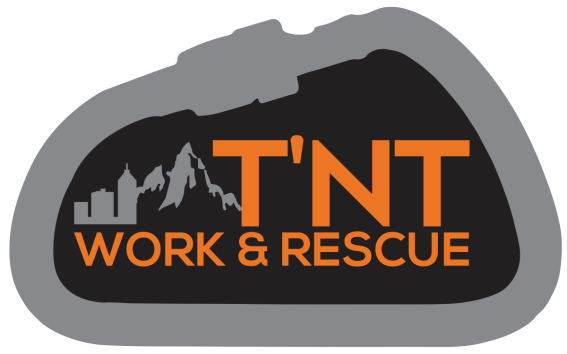 T’NT Work & Rescue, based outside of Edmonton, Alberta, has been serving the Canadian market for over 25 years and has worked diligently to build a reputation of trust and expertise in the industry. T’NT supports various industries throughout Canada, such as Fire Departments, Military and Law Enforcement, Mine Rescue, Search and Rescue, Rope Access, and several other segments of the technical rope rescue and access world. T’NT prides itself on building strong relationships with the best manufacturers in the world, in order to ensure that their clients have quick access to the latest and greatest products in the rope industry. It is also important to mention that T’NT is the largest stocking dealer in Canada for technical rope rescue equipment, offering expedited turn around and shipping throughout the country.
T’NT Work & Rescue, based outside of Edmonton, Alberta, has been serving the Canadian market for over 25 years and has worked diligently to build a reputation of trust and expertise in the industry. T’NT supports various industries throughout Canada, such as Fire Departments, Military and Law Enforcement, Mine Rescue, Search and Rescue, Rope Access, and several other segments of the technical rope rescue and access world. T’NT prides itself on building strong relationships with the best manufacturers in the world, in order to ensure that their clients have quick access to the latest and greatest products in the rope industry. It is also important to mention that T’NT is the largest stocking dealer in Canada for technical rope rescue equipment, offering expedited turn around and shipping throughout the country.Groupe Montagne Explore’s (GME) mission is to contribute to the development and maintenance of the knowledge and skills of those involved in the field of first aid and rescue with the ultimate goal of participating in improving the safety of workers and the general population. In addition to Cascade Rescue equipment, the company offers lift and gondola evacuation training, medical supervision services, consultations, and provides specialized equipment to cover the breadth of service and sales including all major brands. The headquarters are in Dorval, Quebec outside of Montreal but the GME team operates throughout all regions of eastern Canada.
Equipment and Contacts
Both T’NT and GME offer the full line of products from Cascade Rescue:
Rescue toboggans and accessories
Cascade Professional and Advance Series litters and accessories
Industry leading Litter wheels and Adjustable handle systems
Gondola, chairlift evacuation solutions
Helicopter and Aerial rescue equipment
Technical hardware and soft goods
Search and Rescue equipment and accessories
For more information on how T’NT Work & Rescue or Groupe Montagne Explore can help you get what you need, call the numbers provided below, send an email or reach out to Cascade Rescue to be directed to the best resources for your needs.
T’NT Work & Rescue
Steve Minarchi
780-432-0043
Groupe Montagne Explore
Jean-Marc Nantel
601 Avenue Orly, Dorval
(Quebec) H9P 1G1
855 717-4085
-
It's Back! The Great Cascade Rescue Toboggan Summer Sale (The 2022 Edition)
Back by popular demand! We are excited to announce our 2022 Cascade Rescue Toboggan Summer Sale. From July 1st until August 31st, we are offering $100 off ALL of our toboggans shipped within the continental United States.
We genuinely appreciate your business, and this is our way to say thanks, and help you get ready for the upcoming ski season.
Of course, there are terms and conditions that you need to know, so read on:
Terms and Conditions
Sale begins July 1st, 2022, and ends August 31st, 2022. Orders will all be shipped on a first come, first served basis beginning in October, 2022.
All orders must be pre-paid by August 31st, 2022 to be eligible for Summer Sale discounts.
Orders may be phoned in at 208-263-2484 or placed at www.cascade-rescue.com. Online orders must be paid for with a credit card.
Orders placed with a Purchase Order number will require pre-payment prior to the time of shipping, payment must be received by August 31st,
Offer does not apply to GSA negotiated or COUPA negotiated price purchases. NO EXCEPTIONS.
With that, it's time to go check out the Cascade Toboggan Model 100 "The Legend", Cascade Rescue "CRUISER SS", Model 350 Two Piece - "The Extreme", or any of our other models.
-
Finding Godzilla And Boldly Going Where (Almost) No One Has Gone Before

It’s difficult to find a more extreme environment on Earth than inside the crater of Mount St. Helens in the U.S. Pacific Northwest.
Nonstop rockfall. Avalanches. Chaotic and unstable localized weather patterns. More rockfall. Fumaroles belching steam hot enough to melt the soles of your boots. Unpredictable venting of deadly volcanic gases. Crevasses in the glacier fields. Enormous ice caves just below the glacier surface. It can sometimes feel like everything in the crater is trying to kill you.
But for the few hardy souls allowed once a year into the crater of Mount St. Helens to study volcanology, climatology, microbiology, hydrology, vulcanoglaciospeleogenesisology (I think we made that one up but it fits) or just about any other ology you can imagine, the St. Helen’s crater is an enormous, volatile Petri dish. And for the scientists trying to not only figure out how life was first formed on our planet but how and where we should look for life elsewhere in our solar system, the ice caves beneath the glacier in the crater are akin to a giant, otherworldly laboratory. Which is pretty ironic, considering that more people have been on the moon than have stood in the newly discovered ice caverns below the glaciers in the crater of Mount St. Helens.
But what does all this have to do with a company that makes litters, toboggans, and backcountry safety equipment? Quite a lot, as it turns out. Because the scientists visiting Mount St. Helens need to focus on science, they must rely on a well-equipped and savvy safety and rescue team to support them every step of the way.
That’s where we come in.
Man Versus Volcano
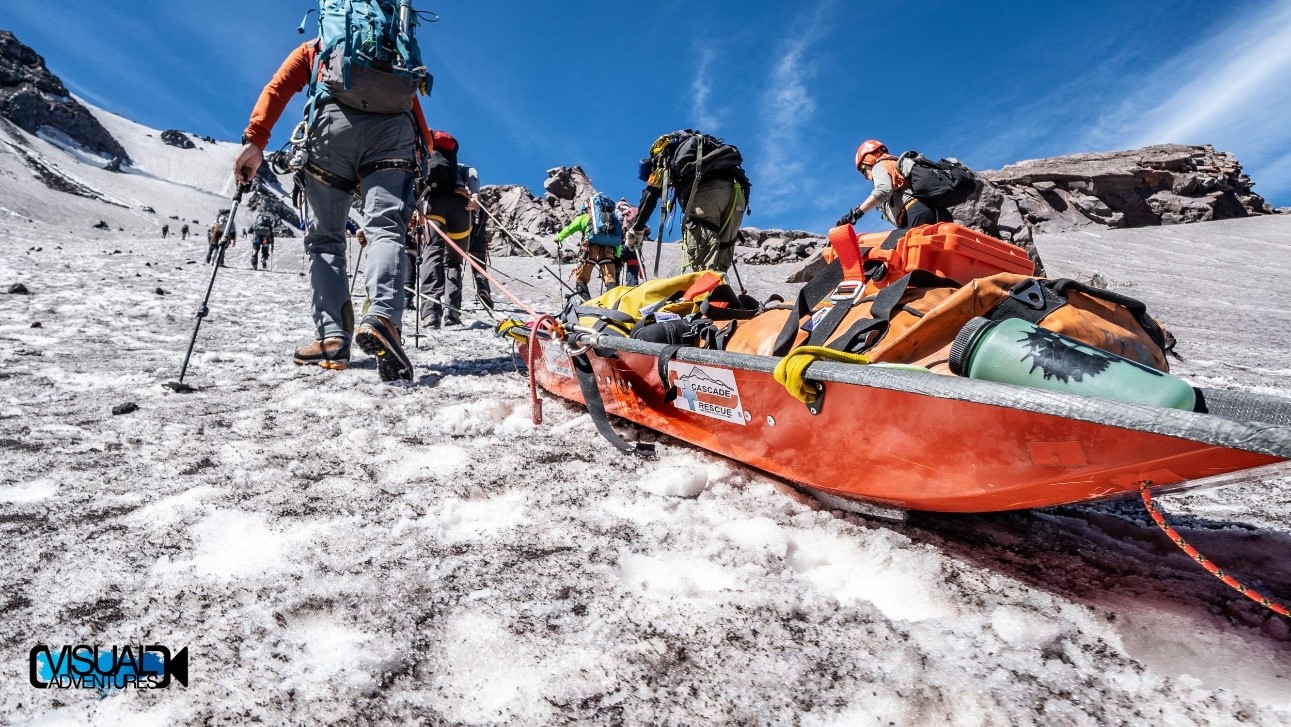 Cascade Rescue helped to sponsor last
month’s Glacier
Cave Explorers’ 2021 Mount St. Helens Expeditionby
supplying them with a Carbon
Fiber/Titanium 350 Series Extreme Toboggan as well
as some rescue gear and sunscreen (that’s
right, our parent company Harken even
makes Harken Derm sunscreen).
Cascade Rescue helped to sponsor last
month’s Glacier
Cave Explorers’ 2021 Mount St. Helens Expeditionby
supplying them with a Carbon
Fiber/Titanium 350 Series Extreme Toboggan as well
as some rescue gear and sunscreen (that’s
right, our parent company Harken even
makes Harken Derm sunscreen).This year’s expedition was the largest to date, with 24 souls spending a week in the crater. And as he’s done since 2014, Eddy Cartaya was the Cat Herder in Chief of the expedition. A veteran National Cave Rescue Commission Cave Rescue Instructor and co-founding member of the nonprofit group known as the Glacier Cave Explorers, Eddy and his wife Barb put together fact finding scientific expeditions into the glacier caves of St. Helens, Mount Rainier, Mount Hood and also work in support of Canada’s Mount Meager project. This year’s crew included rescuers from the Volcano Mountain Rescue Team, Portland Mountain Rescue, the Alberta/BC Cave Rescue Service, Deschutes County Search and Rescue, Corvallis Mountain Rescue, Linville Central Rescue Squad in North Carolina and my own Alpine Rescue Team.
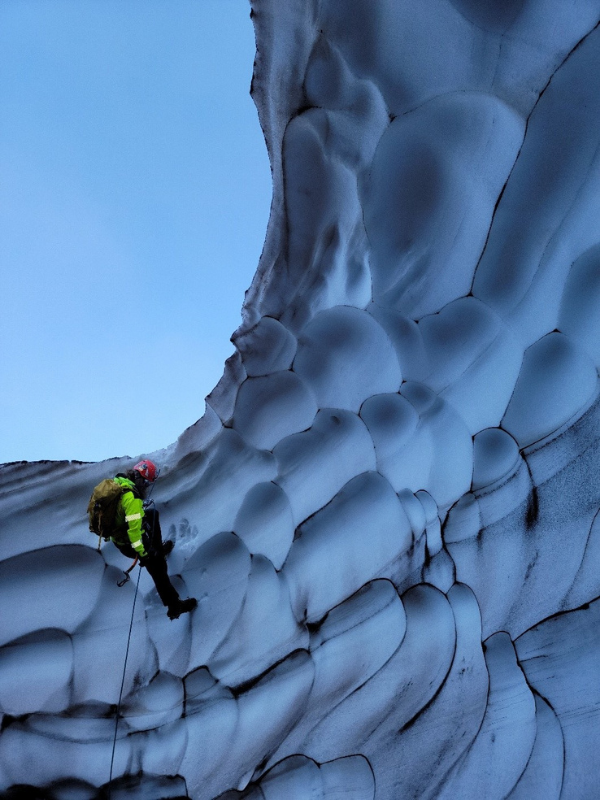
I had the privilege of acting as the expedition Safety Officer alongside some of the best mountain and cave rescuers you could ever ask for. We even brought our own doctor, the incomparable Dr. Woody Peebles, and my old pal Jason Nelson with Visual Adventures was in charge of documenting our efforts for the PBS documentary show “Terra” (look for it to air in October).
German volcanologist and glacier cave expert Andreas Pflitsch headed up the international scientific team that even included some roboticists from NASA’s Jet Propulsion Laboratory.
In Search of Godzilla
When Mount St. Helens erupted in 1980, it blew away the top 1,300 feet of the mountain and left a 2,100’ deep, 2-mile-wide crater. Shortly after that cataclysmic event, a donut-shaped glacier formed in the shade of the crater rim around the two lava domes that were created from spewing lava as it cooled. It’s the only growing glacier in North America, with roughly three kilometers of mapped and surveyed ice caves. These types of ice caves are incredibly rare because they are formed not by running water, but steam and the hot vented vapors from deep inside the earth.
When the first glacier cave was spotted from the crater rim above back around 2014, the massive size of its entrance earned it the name Godzilla Hole. Ever since then, almost all the other caves have been given Godzilla themed names. Mothra, Hedora and Ghidora have all been discovered, surveyed and mapped since 2014. Rodan, the biggest monster cave in the crater, is now the second longest and second deepest fumarole ice cave in the world. Canadians Christian Stenner and Katie Graham have spearheaded most of the surveying efforts, and the minutely detailed cave maps they generated help the scientists figure out where to do their research and allows them to track the changing locations of their data loggers from year to year. These maps are like the canvas that the science is painted upon, as Christian and Eddy are fond of saying.
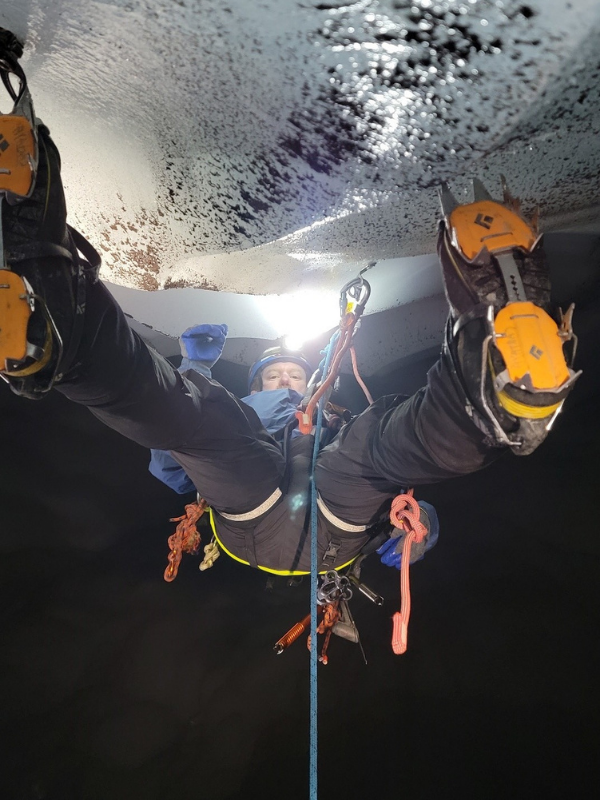
Typically, when we want to explain how slowly something moves, we often refer to its pace as being glacial. The glaciers inside St. Helens may be a lot of things, but slow moving they are not. In one 10-month period this year, a data logger was carried more than 10 meters. Last month, we recorded the glacier moving 1.75 centimeters in less than 24 hours.
Sadly, the original Godzilla Hole has since been swallowed by the rapidly moving glacier. But as we discover in all Godzilla movies, there will likely be a sequel.
Lightweight Access and Rescue RULES
Or at the very least, it sure makes things a lot easier for all of us who were tasked with keeping our scientists and cave surveyors safe while they scrambled to, and through, the three kilometers of caves we’ve discovered.
In the past, we’d relied on an old military sled to carry our supplies from our Base Camp. It’s a mile and a half slog up the rock-strewn glacier, with a gain of more than 1,000 feet in elevation. But in addition to carrying the hundreds of pounds of gear, we needed a litter that could also be used to evacuate a member of the expedition if they got sick or became injured. The Cascade Rescue Model 350 was a welcome improvement on the old litter. It could be broken down into two pieces for the helicopter sling loads, and its carbon fiber/titanium construction helped it to stand up to the uber-abrasive pumice and ash that covered almost every square inch of rock and snow in the crater.

On the steepest slope, we used three dead men anchors (buried pickets in a load-sharing T-slot formation) to set up a raise/lower station. Using a simple counterweight system with a Petzl Microtraction as the progress capture for the 500’ of PMI 8mm DuraShield rope, we were able to help the haul team climb the glacier without gassing out everyone each morning. As we made our way back down the glacier at the end of each day, we’d use a simple Italian Hitch to lower the litter and one attendant. The pumice and volcanic ash embedded in the snow basically turned our ropes into sandpaper when it got impregnated in the sheath, and we nearly sawed through our carabiner in just a few lowers.
To stay sharp, we practiced Small Party Assisted Rescue (SPAR) techniques with minimal lightweight, technical gear. As always, our air monitors and emergency rebreathers, were at the ready. Since rescue from the outside could potentially be hours (or days depending on the weather) away, we needed to be self-reliant and ready for the worst at any given moment.Until We Meet Again

This year’s expedition was the most successful yet, with the scientists meeting and exceeding all their research goals. Most importantly, the team had no major injuries or accidents (other than the shredding of a couple of our expedition tents during a freak late night wind storm).
Cascade Rescue would like to thank everyone for their efforts this year. Also, kudos to the management and staff of the Mount St. Helens National Monument, the National Cave Rescue Commission, the Mountain Rescue Association and JPL Aviation for being so supportive.
And lastly, a big shout out to EVERYONE who trusts their lives to our gear, we genuinely appreciate your continued support of Cascade Rescue throughout the years.
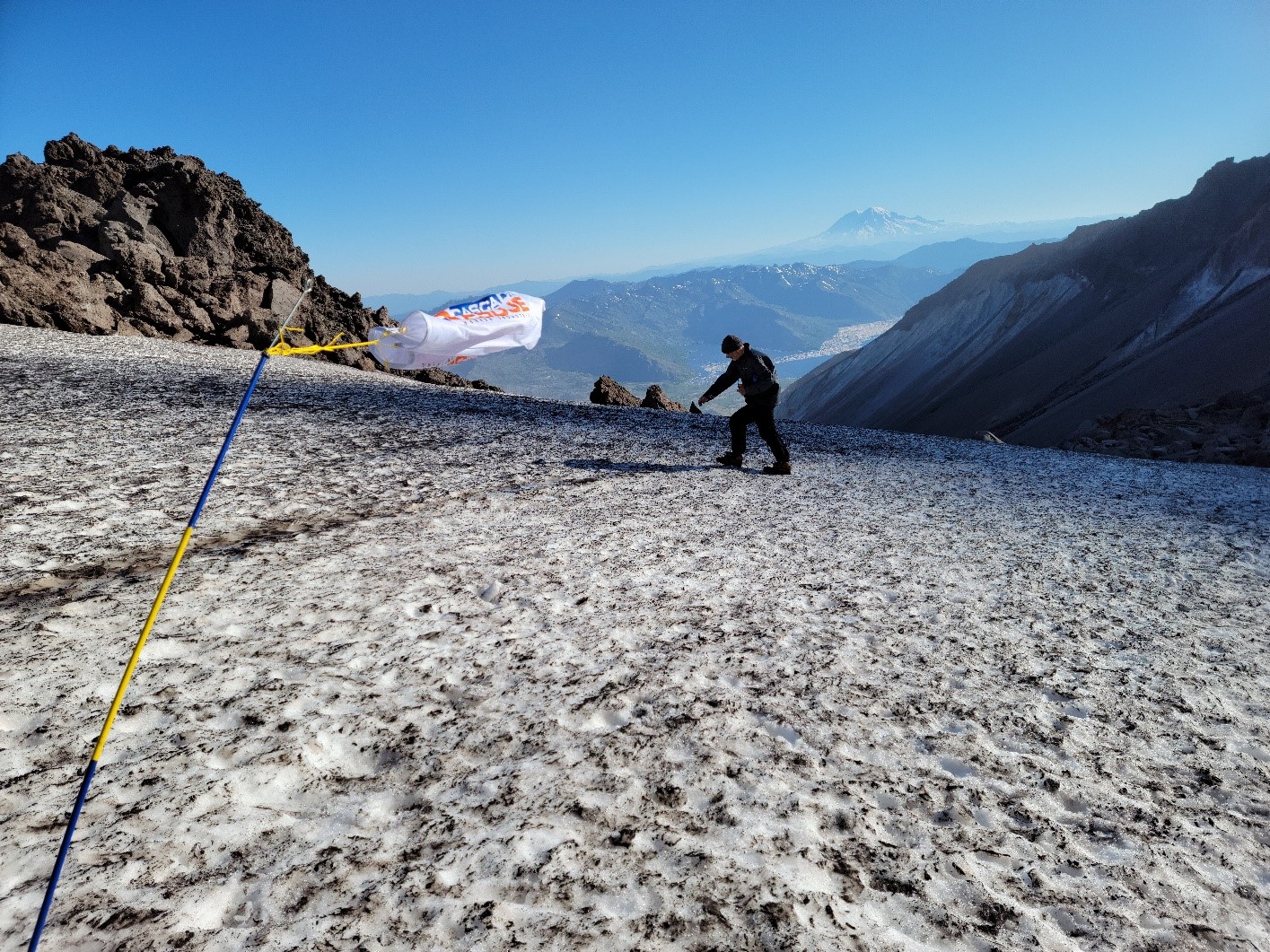
-
The Innovation Integration Conundrum
C'mon, let's admit it. In the world of Search and Rescue, when it comes to the integration of advances in rescue technology, we fear change. Sometimes with good reason, but all too often, not so much. Proposing changes to the way we save lives can challenge long standing dogma and tradition within our respective organizations.
This love/hate relationship with better SAR mousetraps was really driven home for me during a recent body recovery performed by my mountain rescue team.
Let me back up for a moment and state that I am blessed (or maybe cursed) to wear a bunch of different rope/rescue hats. Though I have worked for rescue equipment manufacturers since MySpace was the preeminent form of social media, I was also a mountain rescuer before Y2K threatened all of humanity. So while my day job tasks me with providing input on products designed to make rope access and rope rescue faster/more efficient/safer, my backcountry rescue brain often considers each new shiny widget proposed for implementation to my own rescue team with healthy skepticism at best - outright distrust at the worst.
When Cascade Rescue introduced their two piece Titanium Professional Series Litter/Terra Tamer Litter Wheel/Equalizer Handle patient transport system to the world at the Mountain Rescue Association (MRA) Conference in 2017, I had a hard time believing that only two rescuers could transport an injured subject so easily over rough terrain without a belay on steep terrain, in spite of seeing demo after demo that seemed to prove otherwise. But my rescue team was impressed, and decided to implement Terra Tamer Wheel. But without the Equalizer Handles. Or the hand brake.
We didn’t need no steenkin’ hand brake, we had Jerry.
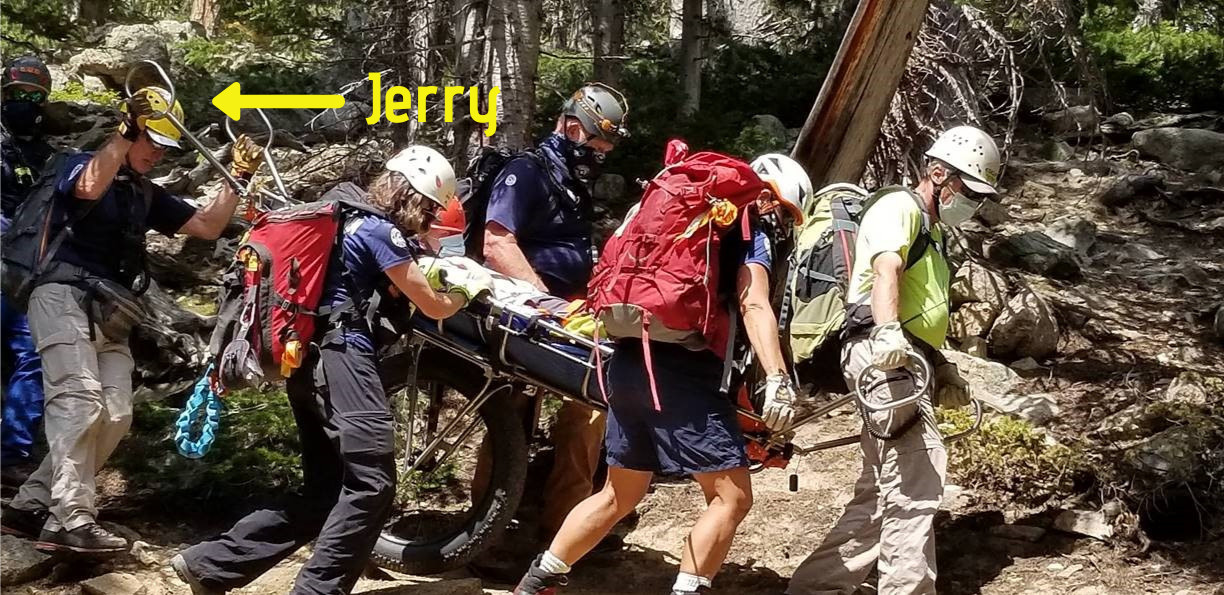
Most mountain rescue teams have a Jerry: A person who shows up at most of the missions and has a role at which they excel. Jerry was our team’s designated human travelling belay/braking system when we had a wheeled litter going down steep terrain. Rope tied to the back of the litter, he would typically help keep it on belay while our 4-6 attendants kept the head slightly up and without leaning too much left or right on the side hills. We had very well practiced litter attendant swaps orchestrated every couple hundred feet, and were masters at the trail pass over obstacles. This, and other procedures, were documented in great detail within the pages of our 400-plus page rescue team bible.
But while the Terra Tamer became our wheel of choice, we resisted the change to our methodologies that would be required if we employed only two attendants using the hand brake and the Equalizer Handles to operate the whole system the way it was intended. We didn’t want to change the decades-long tradition of how we trained and executed carry-outs. And maybe, just maybe, we thought we were smarter than the manufacturer. We knew our business better than anyone, and no one was going to tell us how to do our job. Sound familiar to any other folks out there?
Fast forward a couple of years. We finally purchased a set of Equalizer Handles, and gave them a whirl. We still utilized our tried and tested Jerry belay system, and still used 4 attendants. But try as we might, we couldn’t figure out why the wheel kept tracking sideways on switchbacks. We had to constantly pick up the whole litter and re-center the wheel to keep it from leaning to one side or the other.
We’ve all heard the phrase that bad car mechanics blame their tools when a job doesn’t go as planned. It’s the same for us rescue mechanics. OBVIOUSLY, something was wrong with the wheel, the handles or the litter. Or Jerry. Maybe all the above.
We began to question our choice of this new-fangled litter, wheel and handle system as our primary means of patient transport. Maybe the old way was better after all.
As a last ditch effort to right the ship, we ordered the hand brake and installed it. And after some preliminary testing during one of our first post-COVID 19 in-person, socially distanced and masked up trainings, we felt that maybe it was okay to put the system into service.
But as we all know, what works on trainings doesn’t always fly when it comes to performing actual rescues. Hence our hesitancy to drink the Kool Aid and use this system the way it was designed and built: With two attendants and no Jerry belay.
Last month, we had the chance to put the system to the test. We had the mentally and physically difficult task of evacuating a deceased pilot after his single engine plane crashed into the side of the mountain deep in a remote corner of our response area. The terrain was a nightmare to hike in, let alone for performing a long technical evacuation. Three plus miles of waist deep snow, deadfall and steep terrain had us all worried that we didn’t have enough personnel to perform the carry out. The dozen folks we had at the scene might sound like a lot, but those who have done this before know what a beat down it can be to carry a human being for miles in the backcountry. Twenty rescuers would have been a better number.
But in spite of our best intentions to evolve, we reverted back to the Jerry system with four attendants when we started the carryout. Old habits die hard.
Once again, we were disappointed with our efforts. But this time we called a full stop, dropped two attendants and gave Jerry the day off and instead utilized the hand brake mounted to the Equalizer handle.
Lo and behold, two attendants were able to move our subject easily up and down steep hillsides, over logs, through the snow, with minimal effort or help from others. In fact, once we finally hit the trail, you literally had to run to keep up with the litter. And I saw something happen that I’d never seen before: Rescuers begging to be on the litter. In truth, we could have performed that carry out with just 6 people instead of the twenty that our old method would have required.
So how do we as rescuers deal with the Innovation Integration Conundrum as our choices for rescue equipment keep advancing at such a rapid pace? Surely there has to be a compromise between making change just for change sake and completely ignoring progress in favor of maintaining the status quo.
Perhaps we need to reverse engineer our solutions to match the outcomes we seek and ask ourselves a couple of questions.
1. Does this shiny new widget help us to do our jobs more safely, more efficiently?
2. Will our organization’s culture accept the new widget and commit to the retraining that comes along with it?
If the answer is, “No!” to both of those questions, that might be okay. Sometimes the old ways really are the best ways.
And if the answer is, “Yes!” to question #1 but it’s a, “No!” for question #2, then your organization is going to have some tough discussions ahead. I’ve seen veteran rescuers quit their team in anger over disagreements about the cultural and procedural changes made necessary by adopting new tools.
BUT if the answer to both is, “Yes!” then you should fully embrace those innovative solutions and evolve, as difficult as that can sometimes be. Voice of experience here- follow the manufacturer’s recommendations. And give your Jerry a break.
-
A Year To Remember: An Update On Our Acquisition
Taking care of our customers, treating people well, innovation and producing quality rescue gear that makes rescues safer and faster for those being rescued, and the rescuers. That has been our focus for decades, and will continue to be our focus. Frankly, that list reflects why the acquisition of Cascade Rescue Company by Harken Industrial made a lot of sense. And, guess what? We’re at the one-year mark! Yes, February 1st marked the anniversary of the acquisition. And, let’s just say it has been a year filled with great things, despite the great majority of the year being a pandemic.
Why We Joined Harken Industrial
A like-minded philosophy is important in any relationship, and beyond important in an acquisition type scenario. As talks got deeper with the Harken Industrial team, we learned just how much of a “like-minded” philosophy we shared. Taking care of customers and exceeding their expectations, making the best products possible at a fair price, treating our people well and never forgetting the difference between right and wrong. Both companies shared this philosophy, and still do today. These premises, by the way, were tested countless times over the past year due to the strain and stress of the global pandemic that took its toll on so many people worldwide. The team at Harken Industrial have been there for us, and our customers, every step of the way. Although its probably not the best way to start a partnership, living through that chaos with a strong partner offers a lot of reassurance.
A Few Accomplishments From The Past Year
It’s only been 365 days, but a lot has happened in that time frame – a lot of positive things that directly benefit our customers. For starters, our manufacturing and engineering capabilities have expanded, which has allowed us to bring new products to the market faster…. without skimping on quality. For example, we recently launched the Cascade Rescue Hang Glider, which is a compact version of our Cable Glider and is ideal for more complex scenarios where the evacuee requires a lot of assistance from a rescuer.
In addition, our International reach has expanded. We are now able to leverage the Harken Distributor Network, and our counterparts in Italy are spearheading the efforts to attain CE marking in the EU. This all translates into being able to support more rescuers throughout the globe, handle their jobs more efficiently, while staying safe. We’ve also been able to add two new Canadian distributors, T’NT Work & Rescue and Groupe Montagne Explore’s (GME). These two distributors enable us to offer more support in Canada where snow seems abundant and people flock to the outdoors for the plentiful ski hills.
We’ve also expanded our aerial rescue training offerings through our sister company, Elevated Safety. Elevated Safety, acquired by Harken Industrial in 2018, is comprised of seasoned SPRAT, rope access, rope rescue, tower rescue and back-country rescue trainers (and they also live and breathe rescue scenarios daily). They’ve been supporting the rescue community for years, and have recently expanded West with a complete rope access training facility near Denver, Colorado. The Colorado team offers a variety of SPRAT and back-country rescue trainings, as well as leads aerial evacuation training.
The year 2020 also included the completion of the Aerial Evacuation Resource Guide. This updated Guide is a joint-effort between the NSAA, Cascade Rescue Company and numerous leaders in the work-at-height field. Potentially a bit overdue, but the Guide was worth the wait. It serves as the outline for aerial evacuation training curriculum, and is destined to become a key industry resource for aerial evacuation teams.
As if this weren’t enough: Harken took a monumental step forward in employee stewardship and became an Employee-Owned company (ESOP). Every Harken employee is now an owner of the company. We expect 2021 to be a year of continued excellence in customer service and responsiveness as our “owners” step into their new roles.
What’s Next?
Although we are happy to be looking at 2020 in the rear-view mirror, we also can look upon it fondly. While challenging at times, we know that the year helped us set a positive direction for the years to come. We’re poised for growth, are continuing to innovate and design new products based on rescuer need, and continue to be ready to serve our customers and the industry…backed by a bit more horsepower.
Here's to the next year…or ten….or fifty!
-
Unexpected Demand Driven By COVID 19
 It is no surprise that COVID 19 thrust unexpected challenges upon our industry. One of those surprises, for us, has been the unbelievable demand for our products. We momentarily struggled to understand this phenomenon. It wasn't long before patrollers, search and rescue teams, and others that are routinely engaged in rescue painted a clear picture for us. Driven by social isolation, many of us turned to the great outdoors as an escape from a world turned upside down. This mass exodus from urban areas is placing huge stress on teams around the world as they struggle to help more people than normal, many of them with very little knowledge of outdoor safety and survival skills. We are humbled by the extraordinary efforts we have seen of so many rescuers during this time and are greatly appreciative of their efforts.
It is no surprise that COVID 19 thrust unexpected challenges upon our industry. One of those surprises, for us, has been the unbelievable demand for our products. We momentarily struggled to understand this phenomenon. It wasn't long before patrollers, search and rescue teams, and others that are routinely engaged in rescue painted a clear picture for us. Driven by social isolation, many of us turned to the great outdoors as an escape from a world turned upside down. This mass exodus from urban areas is placing huge stress on teams around the world as they struggle to help more people than normal, many of them with very little knowledge of outdoor safety and survival skills. We are humbled by the extraordinary efforts we have seen of so many rescuers during this time and are greatly appreciative of their efforts.Here at Cascade Rescue, we are experiencing this same phenomenon again. In late March of 2020, you could have heard a pin drop here. We weren't overly concerned. We had plenty of raw materials and a team of great people, and set about our normal day of building product in preparation for summer needs. By the end of April, our world was also turned upside down and we were overwhelmed with orders from teams in the field trying to stay on top of an ever-evolving situation. We've been drinking from a fire hose ever since. I mention this only as a heads up. Throughout the summer we ran out and were back-ordered on litters, trail wheels, and many other products for remote rescue. That remains the case today, although we are catching up.
Now we are seeing the same issue with toboggans, splints, and other products used at ski areas and other winter venues. We still have a dwindling supply of toboggans, wrap splints, patient protectors and many COVID resistant products, and are shipping as fast as we can make them.
If your immediate needs include the addition of toboggans, we recommend you contact us now. If you anticipate additional needs for summer operations we also recommend placing those orders as soon as possible as we will be filling those orders on a first-come basis.
-
Customer Testiomonial: Tamarack Resort
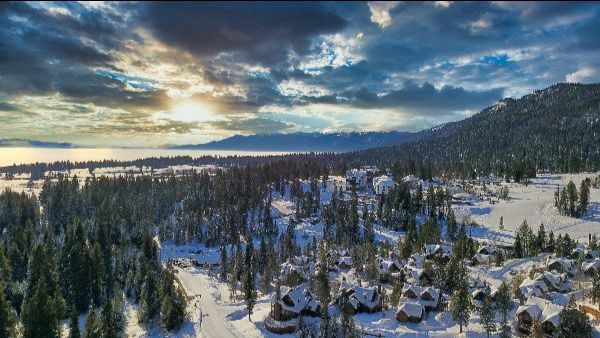 Thanks so much for equipping us
with the latest in aerial evacuation equipment. As you know, Tamarack Resort is a fast-growing, All-Season Resort in
Central Idaho that is rapidly becoming a popular destination. Not only for our
exceptional real estate opportunities, but for our amazing slopes as well. Let
me tell you, our ski area keeps us busy!
Thanks so much for equipping us
with the latest in aerial evacuation equipment. As you know, Tamarack Resort is a fast-growing, All-Season Resort in
Central Idaho that is rapidly becoming a popular destination. Not only for our
exceptional real estate opportunities, but for our amazing slopes as well. Let
me tell you, our ski area keeps us busy!In addition to the exceptional everyday snow sports we have here, we also have many benefits of being a resident of the Resort. One of these homeowner perks are special after-hours events. These events require uploading and downloading of customers including many non-snow sports enthusiasts on at least one of our detachable lifts. Our staff has been challenged with developing lift evacuation solutions and protocols to safely mitigate not only night lift evacuation but many other unforeseen circumstances.
We recently purchased two Cascade Rescue Hang Gliders along with all gear necessary to outfit two aerial rescuers. The Hang Gliders are absolutely something to be proud of from engineering to fabrication standpoint, resulting in a device that provides the ultimate in safety for our staff and customers. You personally made the process easy with your patience and expertise. Shortly after our rescue equipment arrived, we scheduled on site training with your team. Ted from Cascade and Joe from your sister company Elevated Safety. Their expertise and experience were paramount, ensuring that we learned correct processes and procedures all the while emphasizing compliance with OSHA and ANSI standards and best practices for working at height. We will continue to do business with Cascade Rescue and I personally look forward to talking with you again soon.
Eric Gehrung, Ski Patrol Director, Tamarack Resort
-
Cascade Rescue Company: A Little History
 Since 1962, Cascade Rescue products have proven themselves to be the best in the industry – and it all started with rescue toboggans on ski hills. There was a strong desire for a better and easier toboggan than the ones that were common at that time. After several iterations of toboggans through the 1960’s, the products from Cascade Toboggans (later renamed Cascade Rescue) became the industry standard for ski patrollers and rescue professionals. Cascade Toboggan continued to grow and innovate during the 70’s and 80’s and eventually began to expand their product offerings to a growing rescue industry.
Since 1962, Cascade Rescue products have proven themselves to be the best in the industry – and it all started with rescue toboggans on ski hills. There was a strong desire for a better and easier toboggan than the ones that were common at that time. After several iterations of toboggans through the 1960’s, the products from Cascade Toboggans (later renamed Cascade Rescue) became the industry standard for ski patrollers and rescue professionals. Cascade Toboggan continued to grow and innovate during the 70’s and 80’s and eventually began to expand their product offerings to a growing rescue industry.Today, Cascade Rescue manufactures and sells rescue toboggans, high incline litters, gondola and chair lift evacuation equipment including cable gliders, as well as over 150 other products for the rescue industry. They operate out of Sandpoint, ID and have an impressive manufacturing facility where they can perform some of the best metalwork in the world while looking up at the local ski hill.
Harken Industrial
With a similar history, Harken was born out of a need to develop something better than what was commercially available at the time. Brothers Peter and Olaf Harken were avid sailors and began to design and manufacture sailing blocks in 1967. While becoming globally successful in providing high quality blocks, the brothers also expanded and experimented with other products and had a great amount of success building boats as well.

Harken, although originating and still commanding in the sailing world, now has an impressive amount of manufacturing capabilities that are no longer contained within any single market. Harken has group offices around the world and distribution in 48 countries. After 2009, Harken diversified its offerings to include products for work on rope under tension and created a new division, Harken Industrial. Following certification of many of its 'sailing' products for human suspension, which is an appropriately arduous process, Harken Industrial began to translate other technology first born for sailing into unique products for industrial use.
Back in 2019, Harken Industrial also acquired Elevated Safety, a rope access and rescue training company. Elevated Safety – staffed predominantly by rescue and work-at-height professionals – trains other first responders, rescue personnel, and industrial rope access professionals in the safest and most efficient rope techniques.
With these three entities – Harken Industrial, Cascade Rescue and Elevated Safety – working closely hand-in-hand, there is no shortage of ambition, innovation, and specialization circulating throughout the veins of the team.
To read more news about how Harken Industrial and Cascade Rescue connected, read this article from the Harken Industrial website.







